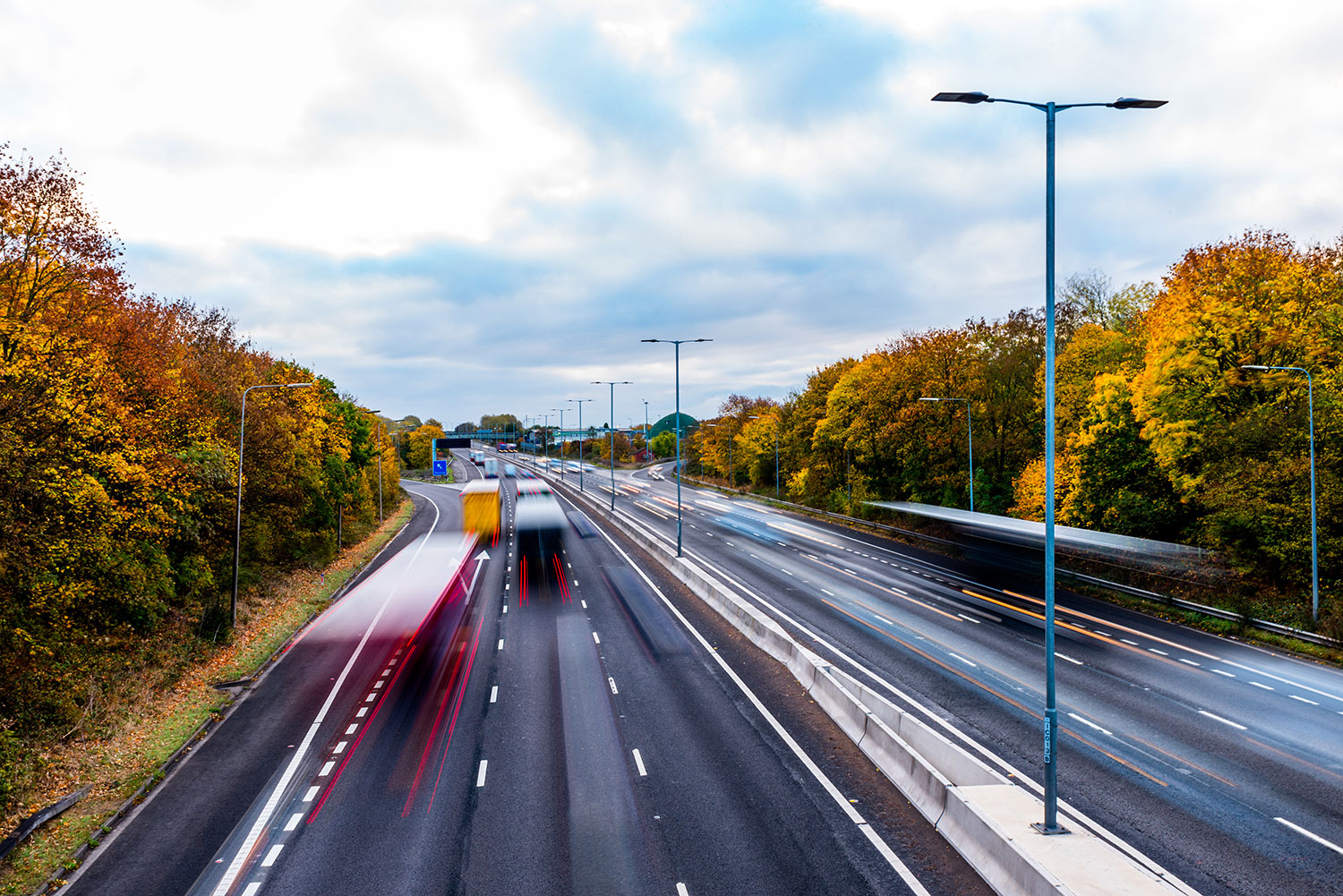
Could secret road sensor checks signal the end for vehicle overloading?
Secret ‘weigh in motion’ sensors have been recently installed on Scottish roads, to cut down on road damage costing UK taxpayers £6.5bn annually.
Large HGVs in particular are a staggering 160,000 times more damaging to roads than cars. With checks finding 59 per cent of UK-registered HGVs to be overweight, it’s clear that vehicle overloading is a huge issue for UK roads.
But road surface damage is just one issue caused by overloaded vehicles. Other problems for transport operators include fines, court action, increased running costs and an increased risk of accidents.

Vehicle overloading: what are the risks?
Fines and prosecution
The DVSA issues fixed penalty notices for vehicles found to be overloaded at roadside checks. This can be up to £300 for a vehicle which is 30 per cent over the allowed limit. Vehicles exceeding this limit will receive a court summons. The Traffic Commissioner is also free to suspend, revoke or renew driver’s and/or an operator’s licence. Also worth bearing in mind is the risk of drivers being prosecuted for dangerous driving caused by an overloaded vehicle, under the Road Traffic Act: a conviction which carries a maximum sentence of two years in jail.
Invalid insurance
A knock-on effect of illegal vehicle overloading is the potential for invalidating any insurance cover – leaving a costly bill if the vehicle is involved in a crash (which is more likely to happen to overloaded vehicles).
Increased running costs
Overloading vehicles significantly increases fuel consumption. Tyres are more prone to wear, steering becomes more difficult to control and vehicles take longer to react to braking. This can dramatically affect vehicle handling, increase daily wear and tear and increase the likelihood of a costly – and potentially fatal – accident.
Fleet downtime
The number of overloaded vehicles being stopped and checked is on the increase. If a fixed penalty notice is issued, the examiner will also prohibit the driving of the vehicle on a road. Not only does this take vehicles off the road, but those found to be overloaded must reduce their load before being allowed to continue – a move which would require another vehicle to be dispatched to share the load.
Increased likelihood of accidents
Overloaded HGVs are five times more likely than cars to be involved in fatal accidents. They are harder to control, more unstable and more difficult to stop in an emergency. Drivers and operators should be aware of the possibility of prosecutions for Dangerous Driving, Health and Safety offences and Corporate Manslaughter.
How to avoid overloading
So it’s clear that overloading isn’t worth the risk – but how can you ensure that your company isn’t contributing to this issue?
Know your vehicle’s weight limits
Drivers should refer to their vehicle’s identification plate, which is usually located in the cabin, under the bonnet or on the chassis. The plate usually shows a manufacturer and serial number, but also shows details of maximum permissible axle weight and maximum permissible gross vehicle weight (GVW).
Ensure even distribution of loads
Be aware of axle weight and ensuring that vehicles are evenly loaded: overloading isn’t just about exceeding GVW. Exceeding the maximum axle weight also has big risks. The maximum permissible axle weight can be exceeded even if the GVW is within acceptable levels. An unevenly loaded vehicle is a lot harder to handle, putting undue pressure on tyres, steering and braking. Axle weight checks should be part of a standard load checking process before vehicles go on the road.
Check vehicle and axle weight
It is important to remember that the GVW is the entire weight of the loaded vehicle; including the weight of goods, driver, passengers and fuel. Weight declarations on invoices and delivery notes should be treated as estimates. The only way to ensure that the vehicle’s maximum permissible weights are not exceeded is to weigh it using a weighbridge and/or an axle weigher. It’s also crucial to ensure that weighing equipment is regularly serviced and calibrated to ensure that accurate readings are given – and to avoid the threat of operational delays caused by weighing system repair downtime.
Familiarisation
If you haven’t already, familiarise yourself with your obligations under the Health and Safety at Work Act, the Road Traffic Act, the Road Vehicles (Construction and Use) Regulations and the Road Vehicles (Authorised Weight) Regulations. All legislation is available online from the DVSA.
Future action
With the number of HGVs on the road increasing year-on-year and the bulk of repair costs falling to taxpayers, it’s highly likely that the government will continue to take action against overloaded vehicles.
Roadside weight checks are already established across the UK, incorporating weigh in motion technology and number plate recognition, so the Scottish weight sensor pilot would be a logical development of the current monitoring system. Whatever checks are put into place, the onus increasingly on operators to implement a fit-for-purpose and regularly serviced weighing system.
Not sure whether you’re doing enough to avoid vehicle overloading? Speak to an expert today for some advice.

 United States
United States  Canada
Canada  Canada (fr)
Canada (fr)  India
India  Malaysia
Malaysia  Ireland
Ireland